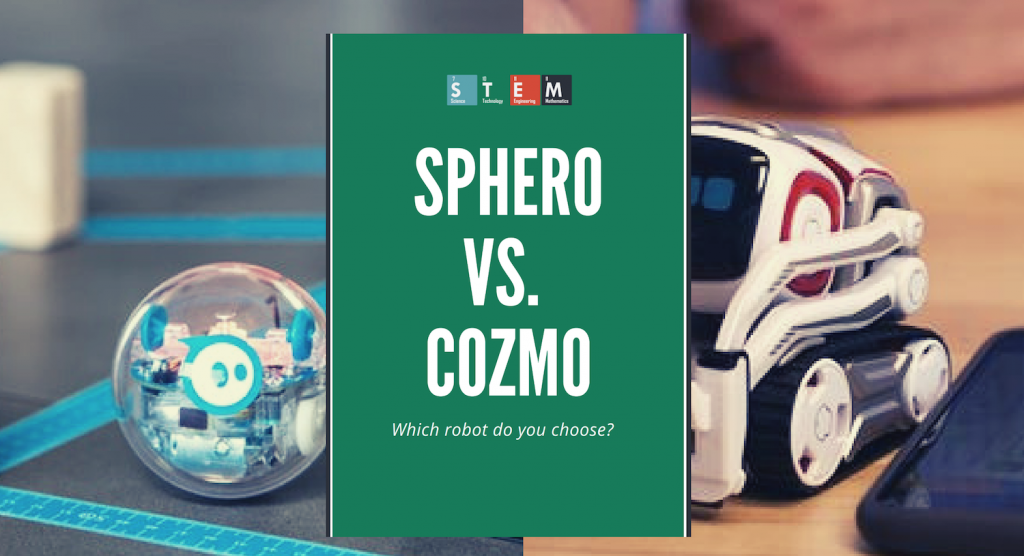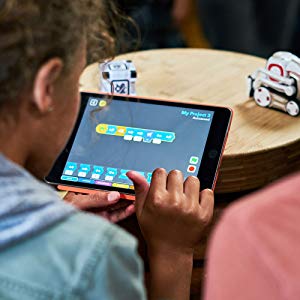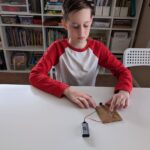Are you trying to decide which programmable bot to purchase? You’re in the right place!
Sphero & Cozmo are both programmable robotic toys. Your kids write the code, and the bots will follow along.
But which one do you buy? Sure, you could get both (after all, both are great!), but as far as toys go, they are expensive.
Here is our side-by-side comparison of Cozmo vs. Sphero to help you decide.
Table of Contents
About Sphero

Sphero activities are endless! You can check out our list of favorite activities, or login to Sphero Edu for activities shared by other users.
Sphero comes in a number of varies. You can purchase Sphero Mini, their miniature, less expensive version. Or get a Star Wars themed version like BB-8 or R2-D2. Our favorite for learning and play is the the classic Sphero SPRK or Sphero Bolt.
Regardless of which one you choose, the functionality is pretty similar. Each Sphero is bluetooth enabled. You download the app and can remotely control your bot or use the drag & drop interface to create commands. Drag and drop actions, operations and more to make your Sphero navigate a maze, paint a picture, or swim across your pool (and so much more!)
You can switch the scratch blocks to see the Javascript code powering your Sphero.
The Sphero Bolt is shock-proof and water-proof and the most durable of the two programmable toy bots. It can also complete more obstacles and mazes than Cozmo. Check out this video of Sphero vs. Cozmo in the same obstacle course. Sphero can tackle it all!
The battery life for Sphero Bolt is 2 hours, slightly longer than Cozmo.
It’s compatible with iOS, Android, Mac, Windows and even Kindle! If the main device your kids have is a Kindle, then Sphero is going to be the clear winner for your family.
Sphero has been my favorite toy for teaching programming for some time now, and its not likely to move away from my top choices!
Price: $49.99 to $149.99 (varies based on model you choose)
About Cozmo
Cozmo is certainly the cuter of the two – and he has a lot more personality! For this reason, it feels a bit more like a true “toy” than Sphero. He’s also uses AI – so he learns the more you play and interact with it.
This adorable bot can also be programmed to complete obstacles, mazes and so much more! It also includes cubes that Cozmo interacts with. There’s easy and fun activities with the cubes that your family can do right out of the box.
Log in to Cozmo Code Lab for more coding activities. You can program Cozmo with the visual drag & drop commands, or for more experienced users can take Cozmo to the next level with full Python SDK programming.
Battery life for Cozmo isn’t very long – only about 45 minutes.
Lastly, it retails at a higher price point at $179.99.
Programming Languages
While both Sphero and Cozmo are packed with potential, one of the big differences is the programming language.
If you are purchasing one of these bots for teaching code for homeschooling, this might be one of the big considerations!
Cozmo is based in Python. Sphero uses Javascript.
Both are incredibly useful programming languages to learn and have wide applications. But the debate between learning Python vs. Javascript is a big one that I don’t have an exact answer for you.
Python is often the most common first programming to learn. Python is more semantic – in other words, it looks more like the English language.
Which to programable bot should you buy?
Overall, if you’re looking for the most versatile programming bot, I recommend Sphero. It has a great price point, its durable, and the learning potential is vast!
However, if you specifically want to focus on Python in your classroom or home, Cozmo is a great choice. Cozmo is also a great choice if you’re less interested in learning the code and simply want a cute, adorable bot to play with. Cozmo has a lot of personality and can navigate around the house on its own, making it the better choice for those less interested in unlocking all of the programming potential.
Have you bought one of these bots? What did you love about each? Let us know in the comments!










SPHERO WINS